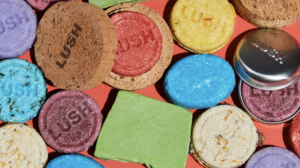In sustainability, we tend to think about “the consumer” like they’re a mythical figure, all-powerful, unpredictable, and in constant need of decoding. But consumers are just people, and people experience grief.
That grief shows up when things change, like when brands evolve, products are reformulated, or packaging gets redesigned. Even when these changes are for the better (or the more sustainable), they can spark a sense of loss — just ask the Capri Sun social media team when the internet was aflame with rumors that they were phasing out their beloved plastic pouch format.
In the years to come, our industry is primed to see a lot of change. As we head into a new era driven by evolving policies, consumer expectations, and environmental urgency, we trust that our industry can meet these demands functionally with innovative sustainable packaging. But can we also meet consumers’ needs emotionally?
At SPC Impact 2025, SYLVAIN Partner Aaron Powers walked our industry through three tools our industry can use to win consumers’ buy-in, comfort, and confidence as we seek to scale sustainable packaging. Let’s break it down.
Why Grief Matters in Sustainable Packaging
“‘Grief,’” Aaron said, “is such a tidy word to describe experiences, isn’t it? In reality, grief is a Pandora’s box of emotions: sorrow, fear, anxiety, confusion, loneliness, and more that are too messy to name.”
Companies have tried to innovate away from grief — think: Disney’s endless live-action remakes or Netflix’s autoplaying a new series immediately after your current obsession ends. Aaron warned us that, no matter what you do, you can’t outpace people’s emotional response to loss.
“You can’t destroy what I loved and force me to believe its replacement is worthy,” Aaron said. “It just doesn’t work like that. Real people don’t work like that.”
If we want consumers to adopt sustainable changes — in products, formats, or systems — we have to innovate alongside grief, not against it. Here’s how:
1. We Can “Light the Candle”

Universal honored a retired Jaws ride, repurposing boat parts as telescopes in Harry Potter World.
When we “light the candle,” we honor what the consumer loses when something they’re attached to changes. When something beloved is lost — even if it’s unsustainable — people remain emotionally connected to it. Commemorating that relationship allows people to acknowledge change and feel seen in the process.
Universal Studios lit the candle, honoring closed rides:
When Universal closed the Jaws ride, Aaron pointed out, fans mourned. But the ride’s spirit lived on: pieces of the ride were repurposed as Easter eggs in new attractions. You’ll find these Easter eggs in places like the Wizarding World of Harry Potter, where telescopes made from the old Jaws boats — a nod to longtime parkgoers.
In sustainable packaging:
As we sunset or evolve familiar formats, we can still honor their history. This might look like limited-edition “farewell” packaging runs or even storytelling campaigns about the evolution of a product.
2. We Can “Light the Path”

Lush offered carbon-positive cork pots to ease the transition to “Naked” living.
To earn consumers’ buy-in for more sustainable packaging and products, Aaron recommended that we don’t rush consumers through their grieving process.
“We can’t, and shouldn’t force people to move on,” Aaron said. “After all, grief has its own timeline, and it’s rarely moving in one direction or moving at one speed. What we can do is guide people forward with intention and patience.”
Apple lit the path during its phase-out of the headphone jack:
When Apple removed the headphone jack, backlash was almost immediate, but Apple eased the transition by including adapters and Lightning EarPods in the box. It wasn’t perfect — but it helped. Fast forward to today, and AirPods are now the dominant product in that category.
In sustainable packaging:
When Lush introduced fully “Naked” (packaging-free) products, many customers didn’t know how to engage with it at first. The company didn’t leave consumers on their own to figure it out. They started offering reusable Knot Wraps and regenerative containers (like their carbon-positive cork pots) to ease the transition to “Naked” living.
3. We Can “Light Their Spirit”

After years of requests, J.Crew announced the return of its iconic print catalogue.
Losing something special can leave us disoriented, Aaron said. “We’re not like ourselves, but just being truly heard can revive the energy needed to see the world in a new light.”
“In our roles, we’re dealing with product grief — not human. That means we actually have the power to do some pretty inspiring, moving things if we really listen for it.” So, how can we listen and respond to emotion to spark even deeper brand connection?
J.Crew lit customers’ spirit with the catalogue comeback:
After years of requests, J.Crew announced the return of its iconic print catalogue. The response? Pure joy. Consumer comments ranged from: “Thanks for listening!” to “There is a God!” The company demonstrated that it really heard its customers and gave them the means for connecting with the brand in a way that felt comforting to consumers.
In sustainable packaging:
If consumers are mourning the “loss” of convenience, aesthetics, or familiarity, listen. Then market or design accordingly. Maybe that means rolling out packaging that mirrors or honors legacy formats in some way, or even reimagining beloved elements through a new lens — like turning a retired design into branded merch.
—
Are you ready to shape the future of sustainable packaging — emotionally and functionally?
Get involved with the Sustainable Packaging Coalition to collaborate with forward-thinking peers, explore bold ideas, and create sustainable change that consumers can meaningfully connect with.
The post Change Hurts: Earn Consumers’ Trust Through Sustainable Packaging Transitions appeared first on Sustainable Packaging Coalition.














